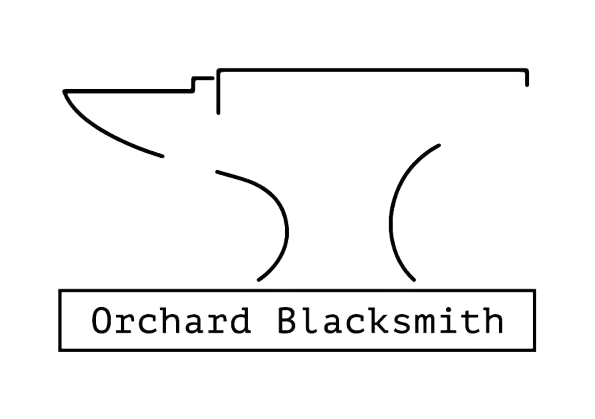Mastering Heat Control: The Secret to Perfect Blacksmithing
One of the most fundamental yet often overlooked aspects of blacksmithing is heat control. Whether you're crafting a delicate knife blade or forging a sturdy tool, achieving and maintaining the right temperature is key to shaping the metal successfully. Blacksmithing isn't just about hitting metal with a hammer; it's about understanding how to manipulate heat to achieve the desired result. In this post, we'll dive into the importance of heat control and explore the different techniques for mastering this vital skill.
Why Heat Control Matters in Blacksmithing
Metal is far from uniform in its response to heat. Each type of metal behaves differently depending on its composition, the temperature it reaches, and the way it’s treated. If the metal is too cold, it will be too brittle to shape. Too hot, and it may become weak or overly malleable, causing it to lose its structural integrity. Knowing how to control the heat throughout the process allows you to forge precise and durable pieces, while also avoiding mistakes that could ruin your work.
The Different Temperature Zones
When working with metal in a forge, you’ll quickly learn that heat is not a one-size-fits-all approach. The heat level you need will depend on the material you’re working with and the type of work you’re performing. Here are the main temperature ranges that blacksmiths need to be aware of:
Black Heat (Below 800°F / 426°C)
At this temperature, the metal is too cool to be shaped easily. It may appear dark or even black due to the lack of visible red heat. This is generally the stage where a piece might be in the process of heating up or cooling down.Cherry Red (Approx. 1,000°F / 538°C)
This is the first heat where metal becomes malleable. The piece will begin to show a dull red color. At cherry red, the metal is still relatively firm but can be worked with some effort. It's suitable for initial shaping or rough forging.Bright Red (Approx. 1,200°F / 649°C)
Metal at bright red is much more malleable and easier to work with. It’s the perfect temperature for forging and shaping tools, knives, or decorative items. You’ll notice the metal glowing brightly in this range, making it an easy stage to visually judge.Orange Red (Approx. 1,500°F / 815°C)
The metal is now softer and more pliable, which is excellent for intricate forging tasks. However, be cautious, as overheating can cause the metal to lose its strength or develop unwanted properties, such as excessive oxidation.Yellow Heat (Approx. 1,800°F / 982°C)
At yellow heat, metals are very soft and can be easily deformed. This temperature is often used for large, heavy forging projects, like tool heads or decorative ironwork. However, some metals can begin to oxidize at this temperature, so keeping an eye on the process is crucial.Welding Heat (Approx. 2,000°F / 1,093°C and above)
This is the heat range needed for welding or joining pieces of metal together. Metal in this range can be fused together, allowing for complex projects, such as welding blades or joining different materials.
Techniques for Achieving Optimal Heat
Maintaining the right temperature throughout the forging process can be challenging, but there are several strategies blacksmiths use to make sure their metal heats evenly and remains at the correct temperature:
Preheating: When working with larger or thicker pieces of metal, preheating can help ensure an even temperature throughout the material. Gradually bring the metal to the required temperature, rather than heating it too quickly, which can lead to uneven heating and potential warping.
Managing the Forge Atmosphere: The atmosphere in your forge plays a significant role in heat control. A clean and controlled airflow allows for a consistent temperature. Too much air can cause the forge to become too hot, while too little air can result in inefficient heating.
Monitoring with a Pyrometer or Temperature Strips: If you're working with high-precision tasks, tools like pyrometers or temperature-sensitive strips (which change color at certain temperatures) can help you gauge the heat more accurately, especially when working with materials that require a specific temperature range for optimal results.
Color as an Indicator: Experienced blacksmiths often rely on the color of the metal to gauge its heat. As the temperature increases, the metal will shift in color from dark to dull red to bright red to orange and eventually yellow. Knowing the color progression can be an invaluable tool for judging heat levels, especially when you don't have access to specialized equipment.
Quenching and Tempering: Once the metal is forged, proper quenching (cooling rapidly in water or oil) and tempering (controlled reheating) are essential steps in controlling the metal’s hardness and flexibility. The right quenching technique can significantly impact the durability of your finished piece.
Conclusion: The Heart of the Forge
Heat control is the backbone of successful blacksmithing. A skilled blacksmith knows how to wield heat just as carefully as they wield their hammer, applying it where needed and avoiding overheating or underheating. Mastering the science of heat not only improves your technique but also elevates the artistry of your work, allowing you to create pieces that are functional, durable, and beautiful.
Whether you're working on small intricate details or large, bold pieces, understanding heat and how to control it will give you the edge you need to forge ahead in your blacksmithing journey.
